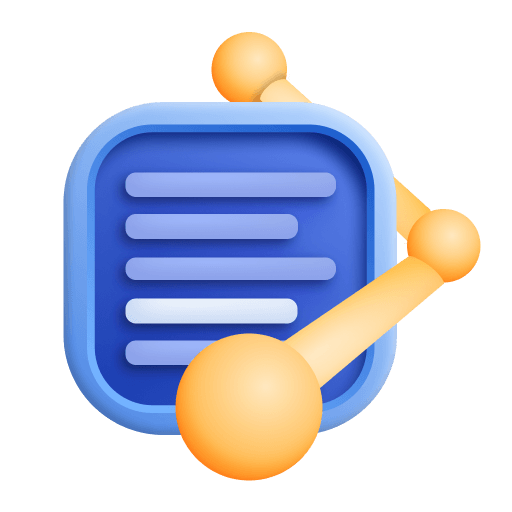Manually instrument your Python application with OpenTelemetry
- Latest Dynatrace
- How-to guide
- 4-min read
This walkthrough shows how to add observability to your Python application using the OpenTelemetry Python libraries and tools.
 Get the Dynatrace access details
Get the Dynatrace access details
Determine the API base URL
For details on how to assemble the base OTLP endpoint URL, see Dynatrace OTLP API endpoints. The URL should end in /api/v2/otlp.
Get API access token
The access token for ingesting traces, logs, and metrics can be generated under Access Tokens.
Dynatrace OTLP API endpoints has more details on the format and the necessary access scopes.
 Instrument your application
Instrument your application
-
Use pip to install the OpenTelemetry SDK and API packages.
pip install opentelemetry-apipip install opentelemetry-sdkpip install opentelemetry-exporter-otlp-proto-http -
Add the following imports to your code.
import jsonimport loggingfrom opentelemetry.sdk.resources import Resource# Import exportersfrom opentelemetry.exporter.otlp.proto.http.trace_exporter import OTLPSpanExporterfrom opentelemetry.exporter.otlp.proto.http.metric_exporter import OTLPMetricExporterfrom opentelemetry.exporter.otlp.proto.http._log_exporter import OTLPLogExporter# Trace importsfrom opentelemetry.trace import set_tracer_provider, get_tracer_providerfrom opentelemetry.sdk.trace import TracerProvider, samplingfrom opentelemetry.sdk.trace.export import BatchSpanProcessor# Metric importsfrom opentelemetry import metrics as metricsfrom opentelemetry.sdk.metrics.export import (AggregationTemporality,PeriodicExportingMetricReader,)from opentelemetry.sdk.metrics import MeterProvider, Counter, UpDownCounter, Histogram, ObservableCounter, ObservableUpDownCounterfrom opentelemetry.metrics import set_meter_provider, get_meter_provider# Logs importfrom opentelemetry.sdk._logs import LoggerProvider, LoggingHandlerfrom opentelemetry.sdk._logs.export import BatchLogRecordProcessorfrom opentelemetry._logs import set_logger_provider -
Add the following code to your startup sequence, to initialize OpenTelemetry right after your application has started. Provide the variables
DT_API_URLandDT_API_TOKENwith the Dynatrace URL and the access token.# ===== GENERAL SETUP =====DT_API_URL = ""DT_API_TOKEN = ""merged = dict()for name in ["dt_metadata_e617c525669e072eebe3d0f08212e8f2.json", "/var/lib/dynatrace/enrichment/dt_metadata.json", "/var/lib/dynatrace/enrichment/dt_host_metadata.json"]:try:data = ''with open(name) as f:data = json.load(f if name.startswith("/var") else open(f.read()))merged.update(data)except:passmerged.update({"service.name": "python-quickstart", #TODO Replace with the name of your application"service.version": "1.0.1", #TODO Replace with the version of your application})resource = Resource.create(merged)# ===== TRACING SETUP =====tracer_provider = TracerProvider(sampler=sampling.ALWAYS_ON, resource=resource)set_tracer_provider(tracer_provider)tracer_provider.add_span_processor(BatchSpanProcessor(OTLPSpanExporter(endpoint = DT_API_URL + "/v1/traces",headers = {"Authorization": "Api-Token " + DT_API_TOKEN})))# ===== METRIC SETUP =====exporter = OTLPMetricExporter(endpoint = DT_API_URL + "/v1/metrics",headers = {"Authorization": "Api-Token " + DT_API_TOKEN},preferred_temporality = {Counter: AggregationTemporality.DELTA,UpDownCounter: AggregationTemporality.CUMULATIVE,Histogram: AggregationTemporality.DELTA,ObservableCounter: AggregationTemporality.DELTA,ObservableUpDownCounter: AggregationTemporality.CUMULATIVE,})reader = PeriodicExportingMetricReader(exporter)provider = MeterProvider(metric_readers=[reader], resource=resource)set_meter_provider(provider)# ===== LOG SETUP =====logger_provider = LoggerProvider(resource=resource)set_logger_provider(logger_provider)logger_provider.add_log_record_processor(BatchLogRecordProcessor(OTLPLogExporter(endpoint = DT_API_URL + "/v1/logs",headers = {"Authorization": "Api-Token " + DT_API_TOKEN})))handler = LoggingHandler(level=logging.NOTSET, logger_provider=logger_provider)# Attach OTLP handler to root loggerlogging.getLogger().addHandler(handler)The file read operations, parsing the
dt_metadatafiles in the example code, attempt to read the OneAgent data files to enrich the OTLP request and ensure that all relevant topology information is available within Dynatrace.Value injectionInstead of hardcoding these values, you might also consider reading them from storage specific to your application framework (for example, environment variables or framework secrets).
 Add telemetry signals manually Optional
Add telemetry signals manually Optional
Create spans
-
To create new spans, we first need a tracer object.
tracer = get_tracer_provider().get_tracer("my-tracer") -
With
tracer, we can now usestart_as_current_span()to create and start new spans.with tracer.start_as_current_span("Call to /myendpoint") as span:span.set_attribute("http.method", "GET")span.set_attribute("net.protocol.version", "1.1")#TODO your code goes hereIn the above code, we:
- Create a new span and name it "Call to /myendpoint"
- Add two attributes, following the semantic naming convention, specific to the action of this span: information on the HTTP method and version
The span will be automatically set as a current and active span until the execution flow leaves the current method scope. Subsequent spans will automatically become child spans.
Collect metrics
-
To instantiate new metric instruments, we first need a meter object.
meter = get_meter_provider().get_meter("my-meter", "0.1.2") #TODO Replace with the name of your meter -
With
meter, we can now create individual instruments, such as a counter.counter = meter.create_counter(name="request_counter",description="The number of requests we received") -
We can now invoke the
add()method ofcounterto record new values with our counter and save additional attributes (for example,action.type).attributes = {"action.type": "create"}counter.add(1, attributes)
Connect logs
With the logging variable, initialized under Setup, we can log straight to the configured OpenTelemetry endpoint at Dynatrace.
logging.error("Log line")
Python logs are still considered experimental and future version may introduce incompatible changes.
 Ensure context propagation
Ensure context propagation
Context propagation is particularly important when network calls (for example, REST) are involved.
If you are using automatic instrumentation and your networking libraries are covered by automatic instrumentation, this will be automatically taken care of by the instrumentation libraries. Otherwise, your code needs to take this into account.
Extracting the context when receiving a request
In the following example, we fetch the value of the traceparent header and use the extract() method of TraceContextTextMapPropagator to retrieve the provided context information, which we subsequently pass to start_as_current_span() to continue our trace.
from opentelemetry.trace.propagation.tracecontext import TraceContextTextMapPropagatortraceparent = request.headers.get_all("traceparent")carrier = {"traceparent": traceparent}ctx = TraceContextTextMapPropagator().extract(carrier)with tracer.start_as_current_span("my-span", context=ctx) as span:span.set_attribute("my-key-1", "my-value-1")
Injecting the context when sending requests
In the following example, we send a REST request to another service and provide our existing context as part of the HTTP headers of our request.
To do so, we pass an empty object to TraceContextTextMapPropagator.inject(), which then receives the necessary traceparent header value. We then include that value in our requests call to the other service.
from opentelemetry.trace.propagation.tracecontext import TraceContextTextMapPropagatorwith tracer.start_as_current_span("my-span") as span:span.set_attribute("my-key-1", "my-value-1")try:carrier = {}TraceContextTextMapPropagator().inject(carrier)header = {"traceparent": carrier["traceparent"]}response = requests.get(url, headers=header)except Exception as e:pass
 Configure data capture to meet privacy requirements Optional
Configure data capture to meet privacy requirements Optional
While Dynatrace automatically captures all OpenTelemetry attributes, only attribute values specified in the allowlist are stored and displayed in the Dynatrace web UI. This prevents accidental storage of personal data, so you can meet your privacy requirements and control the amount of monitoring data stored.
To view your custom attributes, you need to allow them in the Dynatrace web UI first. To learn how to configure attribute storage and masking, see Attribute redaction.
 Verify data ingestion into Dynatrace
Verify data ingestion into Dynatrace
Once you have finished the instrumentation of your application, perform a couple of test actions to create and send demo traces, metrics, and logs and verify that they were correctly ingested into Dynatrace.
To do that for traces, go to Distributed Tracing (previous Dynatrace) or 
For metrics and logs, go to Metrics or Logs (previous Dynatrace) or  Logs & Events Classic.
Logs & Events Classic.